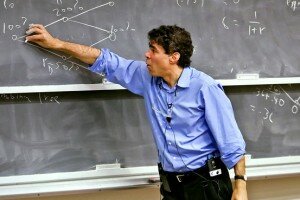 The New York Times on 1/25/2011 printed a photograph of a gentleman looking down at a chessboard, with an interesting subtitle:
The New York Times on 1/25/2011 printed a photograph of a gentleman looking down at a chessboard, with an interesting subtitle:
Pattern recognition is what sets experts apart from novices.
The article points out that “when subjects were shown a chess diagram, the novices looked directly at the pieces to recognize them, while the experts looked on the middle of the boards and took everything in with their peripheral vision”. The idea is absolutely correct: peripheral vision along with the talent to identify patterns (which then lead to original points of view) are critical attributes of successful analysts!
A simple dictionary definition of ‘pattern recognition’ is: identification of objects and images by their shapes, forms, outlines, color, surface texture, temperature, or other attribute, usually by automatic means. Wikipedia is a fine alternative source and presents a long relevant article, but the term is simply too complex for most of us to apply in everyday life.
What interested me the most was that ‘pattern recognition’ was a term which I had used in the early 1980s when I founded Gartner Inc. (then called Gartner Group), and designed a documented research process which included ‘pattern recognition’ as its key! Elements of our process included: surveillance, pattern recognition, stalking horses, search, and of course, documentation. My point is that to produce outstanding research, a formal research process is superior to a hit and run approach: process results in recognizing patterns, which in turn suggest new ideas and hopefully success!
The New York Times was correct in hinting at pattern recognition’s importance, although it failed its readership in not defining what it really meant to those who play chess, let alone to others.
The article concludes with the statement “So, it seems, becoming a good chess or shogi player and wanting to win is habit-forming”. While Shogi is a Japanese game presumably similar to chess, that NYTimes sentence somewhat stumped me!







5 Comments